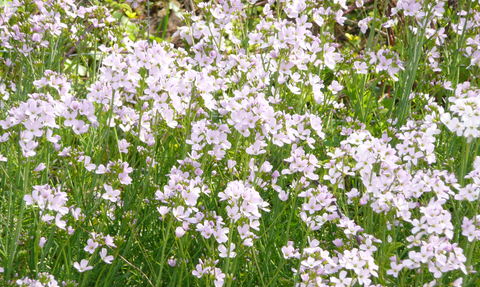
©Karen Lloyd
Species data
Understanding the species that are currently present on your land, as well as those that have been there historically, is an important step in planning appropriate land management. It is important to also consider species found within the surrounding area.
Why use species data?
Certain species, such as great crested newts, are protected by law and need to be factored into land management decision-making. Other species are notably scarce, and managing land sympathetically to their needs can help support fragile populations.
Start by considering species currently present on your land holding. Local knowledge will be key and may also provide insight into species that were previously present but are no longer found. If a species, or group of species, were previously known on the land it could guide potential for re-colonisation or return.
The ability of species to move around in the landscape varies hugely. At one end of the scale, birds are highly mobile and have the potential to quickly colonise new areas, as seen with the spread of little egrets over the past few decades. On the other hand, some species are very immobile and slow to colonise, for example, many woodland plant species. It is certainly worth looking at species data for the surrounding area, and talking to nearby landowners, to get an insight into what exists in the area.
Where does species data come from?
Local knowledge is a vital source of local species information.
Landowners often have a detailed understanding of species known on their land – both presently and historically. Neighbouring and local landowners may have similar knowledge and this can help build an important picture. Farm cluster groups can be an excellent forum for the formal, or informal, exchange of such information between nearby landowners.
There is also a long-standing formal system of species recording in the UK, and this is an important source of information. See below for further information:
Useful links
| Local record centre | Norfolk Biodiversity Information Service (NBIS) is a Local Environmental Record Centre holding information on species, geodiversity, habitats and protected sites for the whole of the county of Norfolk. | NBIS - species data |
| National record centre | National Biodiversity Network (NBN) Atlas - is the UK’s largest repository of publicly available biodiversity data. This can be searched for biological records in your local area. | NBN - species data |
How do I use species data?
Is a species rare?
In many cases, NBIS can provide information on the scarcity or designation of species listed, or data can be requested based on scarcity criteria. There are published ‘red lists’ for groups of species, giving an assessment of threatened species.
Further information:
British Trust for Ornithology: list of bird species of concern
Buglife: Policy & legislation summary for invertebrates
IUCN Red list of threatened species
Does the species or group indicate high-quality habitat?
Certain species are indicators of high quality or particularly valuable habitat. This could be because these species require particular things to survive e.g. clean air or clean water, or it could be because they are slow colonisers, and therefore these species tell us about the habitat e.g. ancient woodland indicator species.
Scarce or threatened species or habitats
If you believe that you have scarce or threatened species or habitats on your land, please contact us for advice.
County Wildlife Sites
Norfolk County Wildlife Site information:
County Wildlife Sites (CWS) are areas of land rich in wildlife and outside of the nationally protected areas (such as Sites of Special Scientific Interest and National Nature Reserves). They are the best areas for wildlife in Norfolk. There are more than 1,300 CWS in Norfolk, making them a fantastic resource for wildlife.
See our County Wildlife Sites page for more details.
